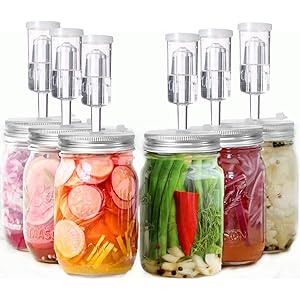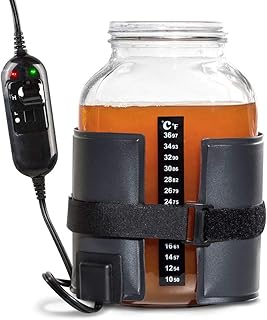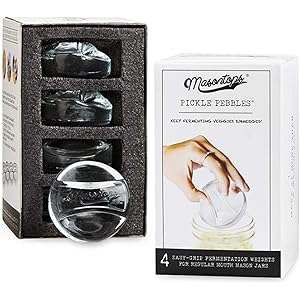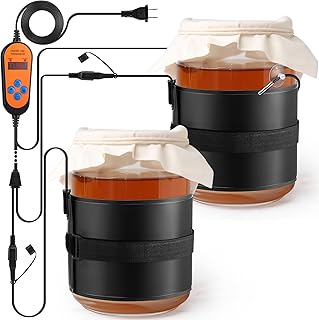Kveik yeast has become a popular choice among brewers in recent years, praised for its unique characteristics, high fermentation temperatures, and quick turnaround times. Originating from traditional Norwegian farmhouse brewing, Kveik is a hardy and versatile yeast strain. However, many brewers wonder whether using a yeast starter with Kveik is necessary or beneficial. In this guide, we’ll explore the role of yeast starters, the unique qualities of Kveik yeast, and when or if you should consider using a yeast starter with this particular strain.
Understanding Yeast Starters
A yeast starter is a small batch of wort (unfermented beer) used to cultivate yeast before adding it to the main batch of beer. The goal is to increase the number of viable yeast cells to ensure a strong and healthy fermentation. For many yeast strains, especially liquid yeast, making a starter is a common practice to achieve a higher cell count. This helps avoid sluggish fermentation, off-flavors, and stuck fermentation issues.
Yeast starters are especially important for high-gravity beers, lagers, or when using older yeast with a lower viability rate. In these situations, a yeast starter provides the yeast with the nutrients and sugars it needs to multiply and reach the necessary cell count for a successful fermentation.
What Makes Kveik Yeast Different?
Kveik yeast differs from conventional yeast strains in several ways, which impacts the need for a yeast starter. Here are the key characteristics of Kveik yeast:
- High Temperature Tolerance: Kveik can ferment at temperatures as high as 104°F (40°C), whereas most ale yeasts ferment best between 64°F (18°C) and 72°F (22°C). This allows for faster fermentation and reduces the risk of infections.
- Fast Fermentation: Kveik yeast ferments quickly, often finishing a batch within 48-72 hours. Its rapid fermentation time can be attributed to its resilience and ability to thrive in warm temperatures.
- High Alcohol Tolerance: Some Kveik strains can handle alcohol levels up to 16%, which makes them suitable for high-gravity beers.
- Unique Flavor Profiles: Kveik yeast can produce fruity and citrusy flavors, which can be influenced by the fermentation temperature. Higher temperatures tend to accentuate these characteristics.
- High Viability and Robustness: Kveik can be stored dry and has a long shelf life, maintaining high viability even after months of storage.
These unique properties of Kveik yeast reduce the need for a yeast starter, but there are situations where using one might still be beneficial.
When Should You Consider a Yeast Starter for Kveik?
Although Kveik yeast is robust, there are certain situations where making a yeast starter could still be advantageous. Let’s explore some scenarios where using a starter might improve the brewing process:
1. High-Gravity Brews
High-gravity beers, such as barleywines, imperial stouts, or double IPAs, have a high sugar content, which requires a higher yeast cell count for efficient fermentation. Even though Kveik is known for its high alcohol tolerance, providing more yeast cells can help achieve a cleaner fermentation, reduce stress on the yeast, and avoid the production of undesirable off-flavors.
2. Older Kveik Yeast
If your Kveik yeast has been stored for a long period, especially in liquid form, the viability may be lower. In such cases, creating a starter will help rejuvenate the yeast, increasing the number of healthy cells and ensuring a strong fermentation.
3. Low Pitch Rates
If you are brewing a large batch of beer, such as 10 gallons or more, the yeast pitch rate will need to be higher. While Kveik can perform well with lower pitch rates, a yeast starter can be beneficial in ensuring a sufficient number of cells are present, especially for larger volumes.
4. Cold Fermentation with Kveik
Though not common, some brewers experiment with fermenting Kveik at lower temperatures (below 68°F or 20°C) to produce different flavor profiles. At these lower temperatures, the yeast activity can be slower, and using a starter may help the yeast acclimate and perform better in cooler conditions.
When You Can Skip the Yeast Starter
In many cases, Kveik yeast is robust enough that a starter isn’t necessary. Here are situations where you can confidently skip the starter without compromising the quality of your beer:
1. Standard Gravity Ales
For beers with an original gravity (OG) of 1.050 or lower, Kveik yeast usually performs exceptionally well without the need for a starter. Its ability to thrive in a variety of conditions means it can ferment standard-strength ales efficiently.
2. Freshly Harvested or Slurried Kveik
If you are using freshly harvested Kveik or yeast slurry from a previous batch, it is likely already healthy and active enough to pitch directly. The high viability of Kveik yeast allows it to work effectively even when used in its dry or slurried form.
3. Dry Kveik Yeast
Dry Kveik yeast is typically sold in packets with a high cell count, making it easy to pitch directly into the wort without the need for a starter. The drying process for Kveik yeast preserves its viability, meaning it can be used immediately with reliable results.
4. Small Batch Brewing
For batches under five gallons, Kveik yeast’s resilience and high cell count make it suitable for direct pitching. The smaller volume reduces the need for a large yeast population, and Kveik can still achieve a clean and complete fermentation.
Practical Steps for Using Kveik Yeast
Whether or not you decide to use a yeast starter, following best practices when using Kveik yeast can improve your brewing experience:
- Choose the Right Temperature: Since Kveik yeast can ferment at a wide range of temperatures, choose the temperature that suits the flavor profile you want to achieve. Warmer temperatures will enhance fruity esters, while cooler temperatures may produce a cleaner beer.
- Hydrate Dry Yeast (If Using Dry Kveik): Although Kveik can be pitched dry, hydrating the yeast in warm water before pitching can improve performance.
- Consider Oxygenation for High-Gravity Beers: Even though Kveik is resilient, oxygenating the wort for high-gravity beers can help reduce yeast stress and promote a healthier fermentation.
- Store Yeast Properly: If you’re saving Kveik yeast for future use, dry it out or store it in a cool, dark place. It can remain viable for several months.
- Re-Pitching Kveik: This yeast can be re-pitched multiple times, often becoming more vigorous with each batch. Make sure to sanitize and store the yeast correctly to avoid contamination.
Comparing Kveik Yeast to Traditional Yeast Strains
Kveik yeast’s versatility is what makes it stand out from traditional ale and lager yeasts. It can be used to ferment a wide range of beer styles and thrive under conditions that would stress other yeast strains. Here’s how Kveik compares to more conventional yeasts:
- Fermentation Time: Kveik can finish primary fermentation in 2-3 days, whereas traditional yeasts may take a week or longer.
- Temperature Range: Kveik’s ability to ferment at up to 104°F (40°C) is unmatched by most yeast strains, which usually have an upper limit around 75°F (24°C).
- Cell Count Requirements: Traditional yeasts often require a high pitch rate to avoid off-flavors. With Kveik, lower pitch rates can still result in a high-quality beer.
- Flavor Profile Flexibility: While traditional yeasts may produce off-flavors under suboptimal conditions, Kveik’s fruity esters and phenolic compounds are desirable for many beer styles.
The Case for Kveik in Homebrewing
Homebrewers have embraced Kveik for its forgiving nature and ability to produce high-quality beer in a short amount of time. Its ability to ferment quickly and tolerate high temperatures makes it ideal for those who don’t have temperature control equipment. For new brewers, Kveik offers a chance to experiment with different flavor profiles and beer styles without the fear of ruining a batch due to temperature fluctuations.
For more advanced brewers, Kveik’s unique characteristics allow for creative brewing processes, such as split batches with different fermentation temperatures or using Kveik in unconventional beer styles like sour ales or mixed fermentations.
Final Thoughts: Do You Need a Yeast Starter for Kveik?
In most cases, Kveik yeast does not require a yeast starter. Its high viability, temperature tolerance, and rapid fermentation capabilities make it well-suited for direct pitching. However, there are scenarios where a starter might be helpful, particularly when brewing high-gravity beers, using older yeast, or fermenting at lower temperatures.
For brewers looking to simplify their process and save time, Kveik yeast offers a practical solution. With its robust nature, Kveik can be pitched directly into most homebrew batches with excellent results. However, if you encounter unique brewing circumstances or want to ensure the yeast is as healthy as possible, making a starter is never a bad idea—it’s just not always necessary with Kveik.
Masontops Pickle Pebble Glass Fermenting Weights - Pickling Fermentation Weight Set - Small Mouth Size For Mason Jar Fermentation Kit
$21.99 (as of 02/10/2025 15:41 GMT -03:00 - More infoProduct prices and availability are accurate as of the date/time indicated and are subject to change. Any price and availability information displayed on [relevant Amazon Site(s), as applicable] at the time of purchase will apply to the purchase of this product.)
Receive tips, news and exclusive offers! Sign up for our newsletter now!











